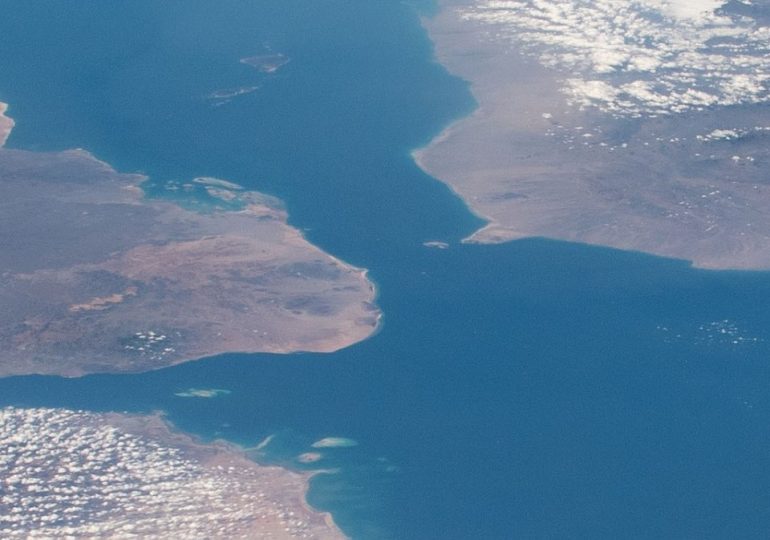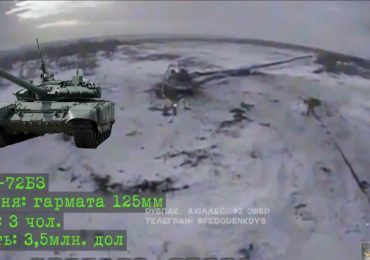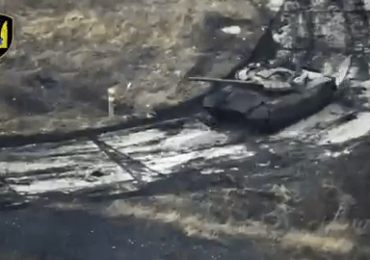UNDER a barrage of rockets and drone attacks, the vital shipping route through the “Gate of Tears” is being abandoned as an Iran-backed militia turns it into an active warzone.
Over £1trillion of the world’s trade is at risk as Houthi rebels unleash chaos on the most narrow and perilous stretch of the Red Sea – the Bab el-Mandeb Strait.
Earth Science and Remote Sensing Unit, NASA Johnson Space CenterGlobal trade risks being disturbed by Houthi attacks on the 20 mile-stretch of perilous water[/caption]
ReutersHouthi rebels have been targeting any ships seen to be going to or from Israeli ports[/caption]
Ships attempting to cross the 20 mile-wide stretch of water are forced to move dangerously close to the coast of Yemen, where increasingly emboldened Houthi rebels are waiting to strike.
The Strait forms the strategic link between the Indian Ocean and the Mediterranean Sea via the Red Sea and the Suez Canal and roughly 10 per cent of all global trade passes through it.
However, since the Israel-Hamas war broke out, the Iran-backed militia have vowed to attack any ships moving to or from Israeli ports.
And they have ferociously followed through on those threats – posing a huge threat to global trade.
Numerous commercial ships in recent weeks have been targeted by suspected Houthi missiles, drones and hijackers.
Today, the UK reported three possible attacks, which included a drone assault on a Norwegian tanker and shipping companies are quickly suspending operations in the area.
The Houthi rebels, which control most of Yemen, have pledged to continue their attacks until Israel stops its devastating bombardment and invasion of the Gaza Strip.
TRADE UNDER FIRE
The Red Sea forms the gateway to the world as it provides the only route for ships travelling between Asia and Europe without having to sail around southern Africa.
It can save up to 30 days at sea – but those who cross must pass through the “Gate of Tears”, which got its name from the lethal nature of navigating through the tight strait.
In a major escalation of Houthi attacks against Israel, they targeted and successfully hit a Norwegian tanker a week ago with a cruise missile.
The militia group followed it up with two further attacks on two cargo ships crossing through Bab el-Mandeb.
Today, the British maritime authority reported a “possible explosion” that struck a key shipping lane off Yemen today.
Two other incidents near the strait at the end of the Red Sea were also reported.
It was later announced that a petrochemical tanker, the Norweigan Swan Atlantic, had been struck by multiple projectiles that the Houthis quickly claimed responsibility for.
Last month, they hijacked a major commercial ship.
In response to the relentlessness of recent attacks, oil giant BP today temporarily paused all of its shipments through the Bab el-Mandeb due to a “deteriorating security situation”.
The price of oil rose today over concerns that the world’s oil supply could be severely disrupted if the attacks continue.
One of the world’s largest shipping firms, Evergreen Line, also said it would suspend its journeys through the Red Sea “until further notice”.
It followed two other shipping giants, Maersk and Hapag-Lloyd, pausing their operations in the Red Sea last week after being targeted by the Houthis.
Also today, London’s marine insurance market widened the area of the Red Sea it deemed as high-risk.
The joint war committee widened the ‘high risk zone’ to 18 degrees north from 15 degrees north.
SHOW OF FORCE
The US, UK and Israeli Navy have all sent warships into the increasingly troubled area in order to try to regain stability in the major shipping route.
However, the Houthi’s largely indiscriminate attacks on vessels have not been deterred.
The US is now expected to announce a new task force called “Operation Prosperity Guardian” to protect the vital shipping lane from Houthi attacks tomorrow.
It will involve 39 different nations working together to focus on counter-piracy and counter-terrorism in the Red Sea.
Over the weekend, a Royal Navy warship shot down an attack drone launched by the Houthis in the Red Sea.
HMS Diamond fired a Sea Viper missile to blast the kamikaze drone out of the sky – marking the first time the Royal Navy has fired air defence weapons in anger for more than 30 years.
The HMS Diamond was sent to steam through the Suez Canal in November in a show of force to Hamas-backers Iran.
The drone that it wiped out was attacking a merchant vessel in the world’s busiest shipping lanes.
It came only days after USS Carney, a US Navy guided missile destroyer, shot down 14 drones fired by the Iran-backed terror proxy.
It was at least the third time US warships have fired on Houthi missiles and drones since Hamas launched their October 7 massacre.
Last week, Israel dispatched one of its most powerful warships to the Red Sea.
The Israeli Navy’s Sa’ar 6-class corvette has been declared operational and has joined the UK, French and US vessels already deployed.
IRAN’S WRATH
Since Israel declared war on Hamas following their bloody October 7 massacres, both Iran’s terror proxies in Yemen and Lebanon have repeatedly threatened to open up new fronts in the conflict.
The Houthi rebels and Hezbollah are part of Iran’s self-styled “Axis of Resistance” against Israel and have been striking both Israeli and US targets in “solidarity” with Hamas.
The Houthis have been focusing their energies relentlessly on the key shipping lanes to cause as much trouble as possible.
But the militia movement has also been sending rockets and missiles hurtling towards Israel – some of which have been intercepted by US and UK warships in the Red Sea.
Meanwhile, their Lebanon-based allies, Hezbollah, have been pounding Israeli military positions in the country’s north with mortar fire and suicide drones.
Israel has been forced to retaliate with warplanes, helicopters and missiles – while keeping a hefty section of its troops stationed at the border, instead of in Gaza.
The border skirmishes in the past months fuelled fears that the conflict may spiral into an all-out war across the region.
However, so far both terror proxies have stopped short of actions that would trigger such a large-scale escalation.
ReutersThe moment Houthi rebels stormed a cargo ship last month[/caption]
GettyThe Galaxy Leader ship was hijacked by the militia group on November 20[/caption]
A Royal Navy Type 45 destroyer, HMS Diamond, shot down an attack drone over the weekend near the Strait
Iran-backed Houthi rebels are causing chaos in the Red Sea as they vowed to target Israeli ships
Israel has an iron fleet of naval warships, including the four Sa’ar 6-class corvettes
HMS Diamond, pictured docked in the River Thames in Greenwich, was also deployed to the Red Sea
Leave a comment
















